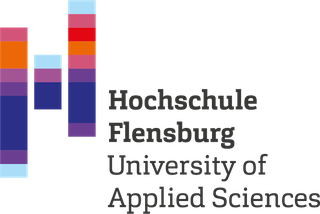Publikationen
2013
- Scholbrock, A., Fleming, P., Fingersh, L., Wright, A., Schlipf, D., Haizmann, F., & Belen, F. (2013). Field testing LIDAR based feedforward controls on the NREL controls advanced research turbine. In 51st AIAA Aerospace Sciences Meeting including the New Horizons Forum and Aerospace Exposition. Grapevine, TX, USA. http://doi.org/10.2514/6.2013-818 (Original work published 2025)
Calcarides A?E, Antibacterial Macrocyclic and Linear Polyesters from a Calcarisporium Strain
Silber, J., Ohlendorf, B., Labes, A., Erhard, A., & Imhoff, J. F. (2013). Calcarides A?E, Antibacterial Macrocyclic and Linear Polyesters from a Calcarisporium Strain. Marine Drugs, 11, 3309–3323. Abgerufen von http://oceanrep.geomar.de/21998/ (Original work published 2025)Abstract
Exportformate
Filter Tags
FH Flensburg erforscht dynamische Leistungsbereitstellung durch WEA
Jauch, C. (2013). FH Flensburg erforscht dynamische Leistungsbereitstellung durch WEA. Ingenieurspiegel, 22. (Original work published November 2013)Exportformate
Weiterführende Links
Filter Tags
Making SMCP count!
John, P., Björkroth, P., & Noble, A. (2013). Making SMCP count! In International Maritime English Conference (IMLA-IMEC) (S. 15). Istanbul (Turkey): Piri Reis University (Istanbul, Turkey). Abgerufen von http://imla.co/sites/default/files/imec25.pdf (Original work published September 2013)Abstract
Exportformate
Weiterführende Links
Filter Tags
Integrated Therapy Safety Management System
Podtschaske, B., Fuchs, D., & Friesdorf, W. (2013). Integrated Therapy Safety Management System. British Journal of Clinical Pharmacology, 76(Suppl 1), 5–13. http://doi.org/https://doi.org/10.1111/bcp.12155 (Original work published September 2013)Abstract
Exportformate
Weiterführende Links
Filter Tags
Calcaripeptides A?C, Cyclodepsipeptides from a Calcarisporium Strain
Silber, J., Ohlendorf, B., Labes, A., Näther, C., & Imhoff, J. F. (2013). Calcaripeptides A?C, Cyclodepsipeptides from a Calcarisporium Strain. Journal of Natural Products, 76, 1461–1467. Abgerufen von http://oceanrep.geomar.de/21997/ (Original work published Juli 2013)Abstract
Exportformate
Filter Tags
Certain CM class fields with smaller generators
Uzunkol, O., & Küçüksakallı, Ö. (2013). Certain CM class fields with smaller generators. Abgerufen von https://arxiv.org/abs/1307.6273 (Original work published Juli 2013)Exportformate
Weiterführende Links
Filter Tags
Konzeptstudie für Windenergieanlage mit Azimutlager am Turmfuß
Faber, P. D.-I. T., Beye, T., & Rudolf, R. (2013). Konzeptstudie für Windenergieanlage mit Azimutlager am Turmfuß. Bauingenieur, (6), 6. (Original work published Juni 2013)Exportformate
Weiterführende Links
Filter Tags
Information density in bridge team communication and miscommunication—a quantitative approach to evaluate maritime communication
John, P., Brooks, B., Wand, C., & Schriewer, U. (2013). Information density in bridge team communication and miscommunication—a quantitative approach to evaluate maritime communication. WMU Journal of Maritime Affairs, 12, 16. http://doi.org/https://doi.org/10.1007/s13437-013-0043-8 (Original work published März 2013)Abstract
Exportformate
Weiterführende Links
Filter Tags
A Safe Control Algorithm for Emulating Grid Inertia in Commercial Wind Turbines
Geisler, J., & Schrader, S. (2013). A Safe Control Algorithm for Emulating Grid Inertia in Commercial Wind Turbines. In European Wind Energy Association Annual Conference and Exhibition 2013 (EWEA 2013). Wien. (Original work published Februar 2013)Exportformate
Weiterführende Links
Filter Tags
